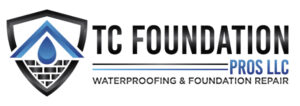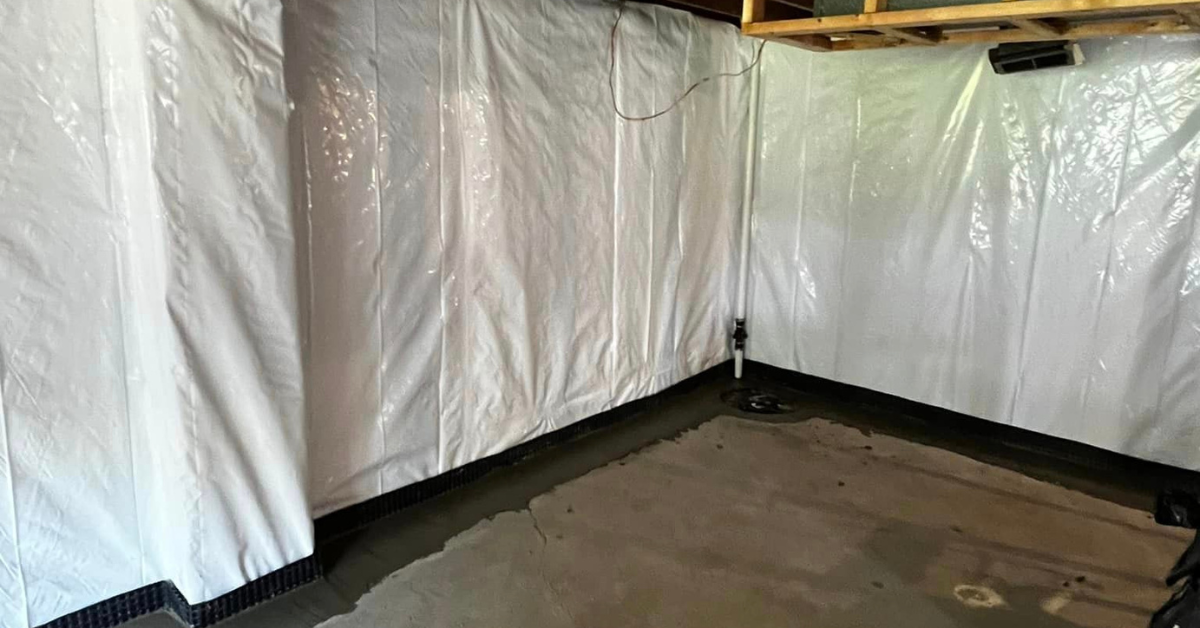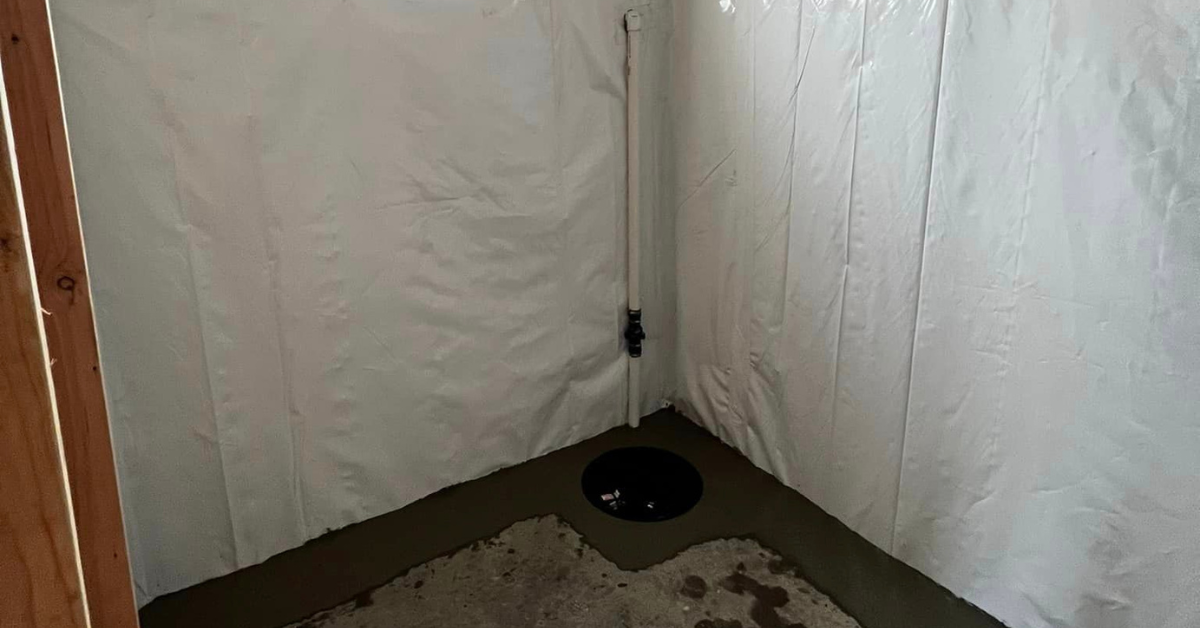For effective basement waterproofing, try interior drainage systems to redirect water, exterior methods using waterproof membranes, and sump pump installation to prevent flooding. Remember, each technique has a specific purpose: to keep your basement dry and mold-free. Expertise in waterproofing is essential to identify issues and implement tailored solutions. Cost considerations such as materials, labor, permits, and quality are key for successful waterproofing projects. Don’t forget maintenance tips like regular inspections and sealing cracks to guarantee long-term protection. These techniques form the foundation of basement waterproofing, providing a holistic approach to a water-resistant home.
Key Takeaways
- Exterior and Interior Waterproofing Methods
- Drainage Solutions for Basement Protection
- Importance of Expertise in Waterproofing
- Cost Considerations and Planning
- Maintenance Tips for Long-Term Waterproofing
Importance of Basement Waterproofing
Basement waterproofing plays an important role in protecting your home’s foundation from water damage and mold growth. By preventing water infiltration, you safeguard the structural integrity of your home and ensure a healthy living environment. Waterproofing techniques create a barrier that stops water from seeping into your basement, mitigating the risk of cracks, leaks, and dampness.
One key aspect of basement waterproofing is ensuring proper drainage. By directing water away from your foundation, you prevent excess moisture buildup that can lead to foundation cracks and mold growth. Installing a drainage system, such as French drains or a sump pump, can effectively manage water flow and protect your basement from flooding.
Another essential component of basement waterproofing is sealing cracks and gaps in the foundation walls and floor. These openings provide easy access for water to enter your basement, leading to potential water damage and mold issues. By sealing these areas with waterproofing materials, such as sealants or membranes, you create a watertight barrier that enhances the overall protection of your basement.
In essence, basement waterproofing is crucial for maintaining a secure and healthy home environment. By implementing proper waterproofing techniques, you can prevent costly water damage, preserve the structural integrity of your home, and create a space that’s free from mold and moisture-related issues.
Common Causes of Basement Water Issues
To effectively identify and address common causes of basement water issues, a thorough understanding of potential sources is essential. Water problems in basements often stem from poor drainage, cracks in the foundation walls or floors, malfunctioning sump pumps, or leaks in plumbing or utility lines. Inadequate grading around the foundation can lead to water pooling near the basement walls, increasing the risk of seepage. Additionally, heavy rainfall or melting snow can saturate the soil around the foundation, causing hydrostatic pressure that forces water into the basement through cracks or gaps.
Improperly sealed windows or doors, damaged window wells, and clogged gutters and downspouts can also contribute to basement water issues. Water can infiltrate through these openings during storms or periods of heavy precipitation, gradually causing moisture problems inside the basement. In addition, plumbing leaks or burst pipes within the basement or adjacent areas can result in water accumulation, leading to dampness and potential water damage.
Moreover, high humidity levels in the basement due to poor ventilation or insulation can create a conducive environment for mold and mildew growth. These fungi not only thrive in damp conditions but also pose health risks to occupants. Understanding these common causes of basement water problems is critical for implementing effective waterproofing solutions and safeguarding your home against potential water damage.
Exterior Waterproofing Methods
Consider utilizing exterior waterproofing methods to fortify your basement against water intrusion and protect your home’s foundation. Exterior waterproofing involves preventing water from entering your basement through the exterior walls. One effective method is the application of a waterproof membrane. This membrane is a thick coating applied to the exterior walls, creating a barrier against water penetration. It’s important to ensure proper installation to ensure its effectiveness.
Another essential exterior waterproofing technique is exterior drainage systems. These systems help to divert water away from your foundation. French drains are commonly used, consisting of a perforated pipe surrounded by gravel to facilitate water movement. Proper sloping and positioning of these drains are crucial for the best functionality. Additionally, installing a sump pump in conjunction with the exterior drainage system can further enhance water removal efficiency.
Excavation is often necessary for exterior waterproofing. This process involves digging around the foundation to access the exterior walls adequately. It allows for the repair of any cracks or damage and the application of waterproof barriers directly to the foundation. Proper backfilling and grading after waterproofing are essential to ensure water is directed away from the foundation.
Interior Waterproofing Techniques
Utilize interior drainage systems as a pivotal component of your waterproofing strategy to effectively manage water intrusion in your basement. Interior waterproofing techniques focus on controlling water that has already entered your basement. One effective method is the installation of a perimeter drainage system. This system consists of a drain pipe installed beneath the basement floor to collect water and divert it to a sump pump.
Sump pumps are vital in interior waterproofing. They collect water from the drainage system and pump it outside, away from your home’s foundation. Be certain your sump pump is equipped with a battery backup to keep it operational during power outages, preventing water buildup in your basement.
Another interior waterproofing technique is the application of sealants or waterproof coatings on the interior walls and floors of your basement. These products create a barrier that prevents water from seeping through porous surfaces. Properly sealing cracks and joints in the foundation can also help prevent water intrusion.
Interior waterproofing is an essential part of a thorough waterproofing strategy for your basement. By combining interior drainage systems, sump pumps, sealants, and waterproof coatings, you can effectively manage water intrusion and protect your basement from potential water damage. Consider consulting with a professional waterproofing contractor to determine the best interior waterproofing solutions for your specific needs.
Drainage Solutions for Basement Protection
How can you effectively manage water intrusion in your basement through strategic drainage solutions?
One key method is by installing a French drain system. This involves excavating a trench around the perimeter of your basement floor, filling it with gravel and a perforated pipe, and then covering it with more gravel or a membrane to direct water away from your foundation.
Another effective drainage solution is the installation of a sump pump. A sump pump is placed in a pit excavated at the lowest point of your basement. When water accumulates in the pit, the pump activates, removing the water and discharging it away from your home, preventing potential flooding.
Ensuring your gutters and downspouts are clear and functioning properly is essential for effective drainage. By diverting rainwater away from your home’s foundation, you can prevent water from seeping into your basement. Consider installing downspout extensions to guarantee water is discharged at least 5 feet away from your home.
Grading the soil around your home away from the foundation is another important drainage solution. This slope should allow water to flow away from the house, preventing it from pooling around the basement walls.
Professional Basement Waterproofing Services
When contemplating professional basement waterproofing services, it’s vital to grasp the different methods available, the significance of hiring specialists, and the cost implications involved.
Waterproofing techniques like exterior excavation, interior sealants, and drainage systems play a substantial role in averting water damage.
Expertise in evaluating the specific needs of your basement guarantees effective waterproofing, although costs and planning must be carefully considered for a successful project.
Waterproofing Methods Overview
For professional basement waterproofing services, a variety of specialized techniques are available to prevent water intrusion and protect your home’s foundation effectively. These methods are tailored to address specific issues and guarantee long-lasting results. Here are some key waterproofing techniques commonly used by professionals:
- Interior Drainage Systems: Channels water away from the foundation through a network of pipes and drains.
- Exterior Waterproofing: Creates a barrier on the outside of the foundation to prevent water from seeping in.
- Sump Pump Installation: Removes water that accumulates in the basement, keeping it dry and free from flooding.
These methods, when applied correctly, offer thorough protection against water damage and help maintain a healthy living environment in your home.
Importance of Expertise
Hiring professional basement waterproofing services is crucial to securing the expertise needed for effective and long-lasting protection against water intrusion. Professionals possess specialized knowledge in identifying the root causes of water seepage, whether it be through cracks in the foundation, poor drainage, or other vulnerabilities.
Their experience allows for the implementation of tailored solutions, such as exterior waterproofing membranes, interior drainage systems, sump pumps, or epoxy injections. Experts are equipped with the latest tools and techniques to ensure thorough waterproofing that meets industry standards.
Cost Considerations and Planning
Considering the scope of professional basement waterproofing services, meticulous cost evaluation and strategic planning are essential steps before initiating the waterproofing process. To guarantee a successful project, here are key cost considerations and planning tips to keep in mind:
- Budget Allocation: Determine a clear budget that includes all potential costs, such as materials, labor, and any unforeseen expenses.
- Comparative Quotes: Obtain quotes from multiple waterproofing companies to assess prices and services offered.
- Timelines: Establish a realistic timeline for the waterproofing project, taking into account any potential delays or additional work that may arise.
Maintenance Tips for Long-Term Waterproofing
Implementing regular inspection and maintenance routines is crucial for guaranteeing long-term waterproofing effectiveness in basements. By following these maintenance tips, you can safeguard your basement from water damage and maintain a dry, comfortable space in your home.
Start by regularly checking your basement for any signs of water infiltration. Look for damp spots, mold growth, musty odors, or any cracks in the walls or floors. Addressing these issues promptly can prevent more significant problems in the future.
Inspect the exterior of your home for any potential entry points for water, such as clogged gutters or poor drainage. Make sure your downspouts are directing water away from the foundation to prevent water from seeping into your basement.
Maintain your sump pump by testing it regularly to ensure it’s functioning correctly. Clean the pump and pit, and consider installing a backup battery to prevent flooding during power outages.
Seal any cracks or gaps in the walls or floors with an appropriate waterproofing sealant. This will help prevent water from seeping into your basement through these vulnerable areas.
Lastly, consider installing a dehumidifier to control the moisture levels in your basement. Keeping the humidity levels low can help prevent mold growth and musty odors, ensuring a dry and healthy environment in your home.
Cost Considerations for Waterproofing Projects
When contemplating waterproofing projects, budgeting is essential in ensuring the success of your endeavor.
You must weigh the costs of different techniques against the benefits they bring to your basement’s protection.
Implementing cost-saving measures without compromising quality is vital for a cost-effective waterproofing solution.
Budgeting for Waterproofing
To accurately estimate the cost of waterproofing your basement, it’s essential to conduct a thorough assessment of the project scope and potential expenses involved. When budgeting for waterproofing, consider the following:
- Materials: Evaluate the cost of materials needed for waterproofing, such as sealants, drainage systems, and insulation.
- Labor: Factor in the expenses associated with hiring professionals to carry out the waterproofing work.
- Permits and Regulations: Take into account any permits required for the project and guarantee compliance with local regulations.
Cost-saving Measures
Looking to reduce costs for your basement waterproofing project without compromising quality or effectiveness? Consider cost-saving measures like addressing minor leaks promptly to prevent larger issues that may require expensive repairs.
Properly grade the soil around your foundation to guarantee water flows away from the basement walls, reducing the risk of water seepage. Installing gutter extensions and downspouts can also help direct water away from the foundation, decreasing the likelihood of water infiltration.
Opt for high-quality sealants and waterproofing materials that may have a higher upfront cost but provide long-term protection, saving you money on potential future repairs. By implementing these cost-saving techniques, you can protect your basement from water damage while staying within your budget.
Final Thoughts
Congratulations on completing the ultimate guide to basement waterproofing techniques! By following the methods outlined in this article, you’re well-equipped to safeguard your basement from water issues. Remember, proper maintenance is crucial to long-term waterproofing success. So, take action now to guarantee a dry and secure basement for years to come.
At TC Foundation Pros LLC, we are dedicated professionals specializing in foundation services. We provide reliable and expert solutions across Dunbar and Pittsburgh.
Happy waterproofing!


